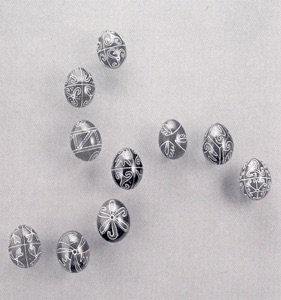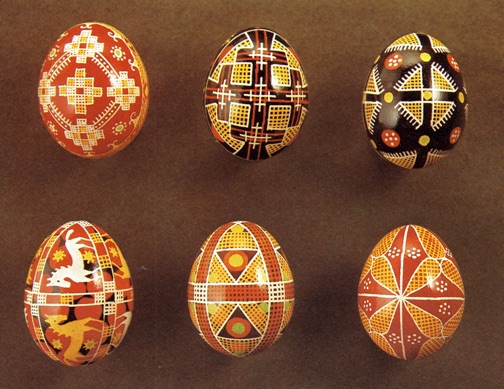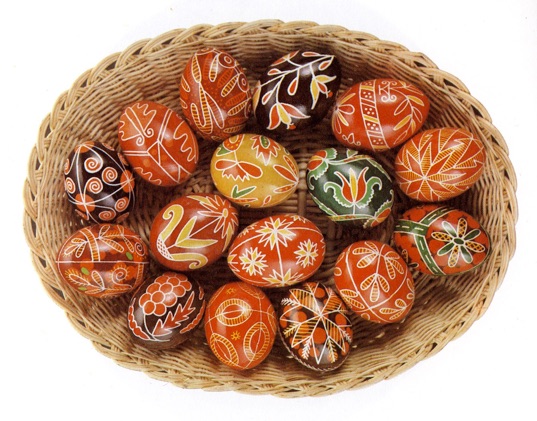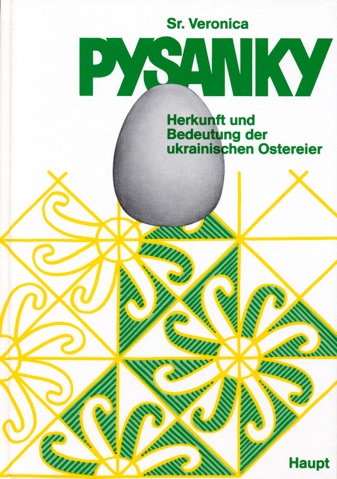
Pysanky: Herkunft und Bedeutung der ukrainischen Ostereier
Pysanka: The Origins and Meaning of Ukrainian Easter Eggs
Author: Sr. Veronica
Edition: 1st
Format: Hardcover
Pages: 78
Language: German
Illustrations: Many, color photos and B/W
Publisher: Verlag Paul Haupt (Berne and Stuttgart, 1982)
Availability: Out of print
Acquired: From the author
ISBN: 3-258-03114-2
I can’t read, write or speak German, so I can’t tell you very much about the text of this book. I heard about it from a colleague, who had seen a woman selling copies at a craft show in Canada. I called the woman and bought a copy from her.
(As I learned much later, Veronica, the woman who wrote the pysanky and the book, is a former nun from Germany, of the Studdite order. Her ihumen was a Ukrainian nun, Sister Daria, who taught her to write pysanky.)
This is a book about traditional Ukrainian pysanky; while the cover may be unexciting, the photos inside are quite exciting. In the first section, customs are discussed, and there are black and white photos of simple pysanky with basic motifs from Shcherbakivsky: tripods swastikas, roses, crosses. The pysanky are arranged into the shapes they represent.

Tripod themed pysanky in a tripod shape
There is a section on symbolism, followed by a discussion of Easter celebrations. The rest of the book has lovely color photos. First there are pysanky from museum collections (recreations, I assume) and books, in sets of six, like on the postcards of the period.

From the book “Ukrainian Culture,” published 1949 in Augsburg
The rest of the book is lovely photos of pysanky divided by ethnographic region of origin. They are beautifully displayed in bowls and baskets.

Pysanky from Vinnytsia, in Eastern Podillia
It’s a book worth owning for the photos alone.
Back to MAIN Pysanka Books home page.
Back to MAIN Books home page.
Back to Pysanka Bibliography.
Search my site with Google




